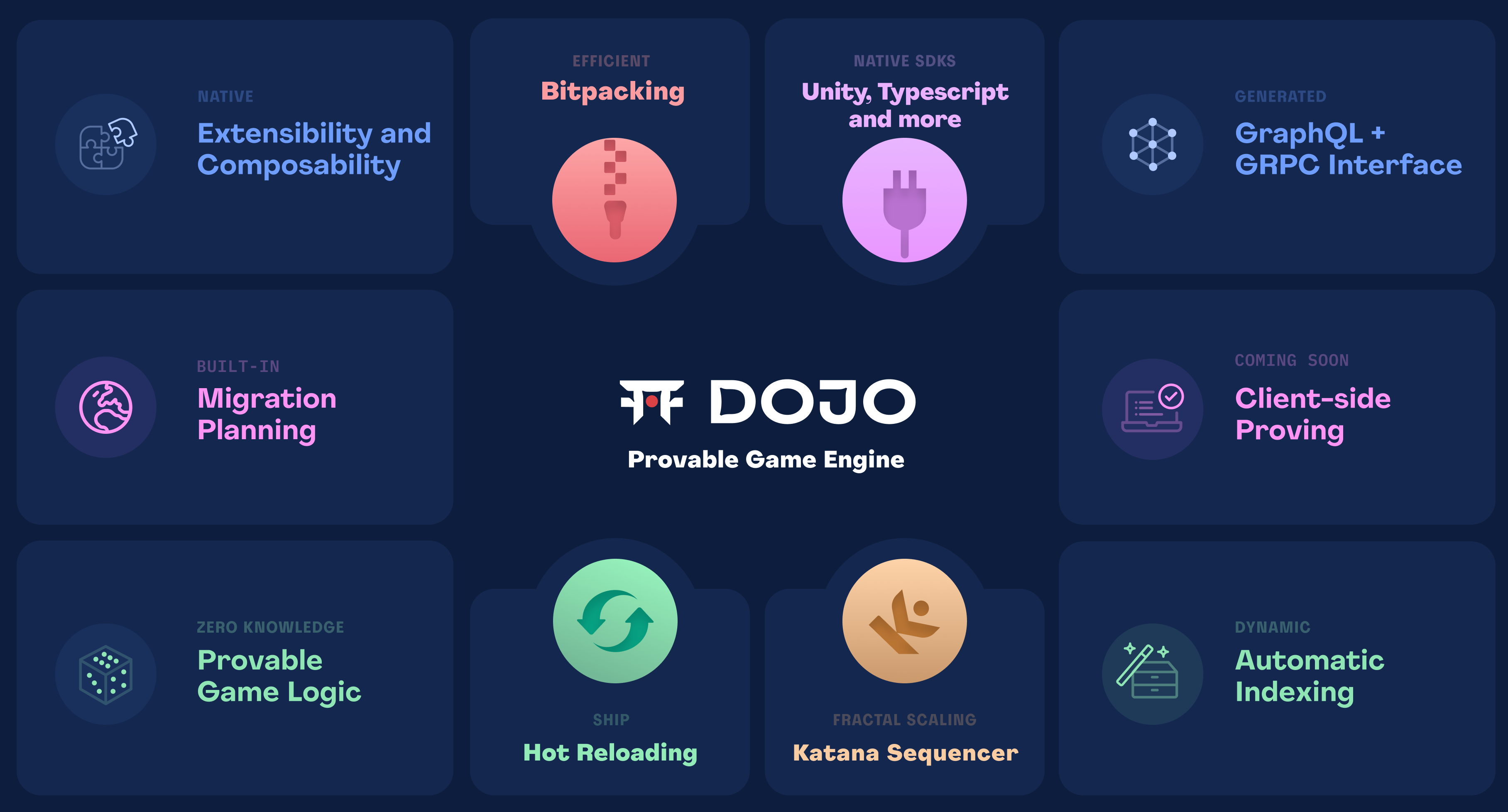Dojo is a cutting-edge ECS framework and toolchain for building provable applications in Cairo, versatile enough to support everything from simple NFT services to the most complex onchain games.
Dojo lets you skip the hassle of managing intricate contract patterns, writing complex indexers, or setting up detailed query systems — letting you focus on bringing your ideas to life quickly and efficiently.

Dojo ECS Framework
Instead of writing raw contracts, Dojo enables a modern Entity-Component-System approach to building interactive applications. Write like you would a database schema and have it reflected onchain and synced with your client.
Katana High-Performance Sequencer
Katana is a high-performance sequencer you can spin up with a single command. Blazing fast and easy to use, Katana gets you up and running quickly.
Torii Indexer for Real-Time State Updates
Torii is an indexer that automatically generates GraphQL and gRPC APIs for real-time state updates. It's designed to make it easy to query and subscribe to onchain state changes.
Sozo CLI for Smart Contract Management
Sozo is a CLI tool for planning and managing smart contract deployments, upgrades, and maintenance. It's designed to make it easy to manage your onchain application's lifecycle.
Multiplatform Client SDKs
Dojo provides client SDKs for interacting with your onchain state from platforms like Telegram and Discord, as well as game engines like Godot, Unity, and Unreal. These libraries make it easy to connect your onchain state to your favorite frontend.
Slot Deployment Infrastructure
Cartridge offers Slot, a managed-service execution layer that lets you easily deploy and scale your provable applications.